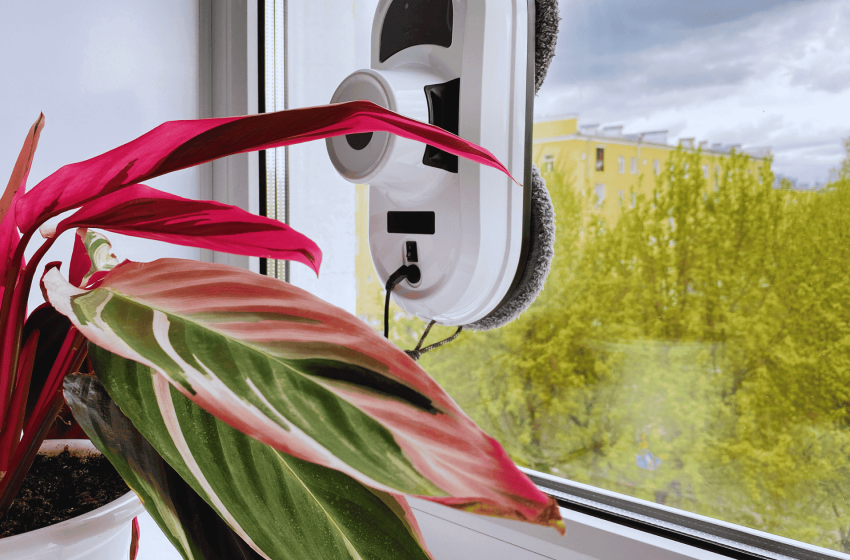How Robot Window Cleaners Ensure Streak-Free Glass Every Time

Keeping windows clean and streak-free can be a daunting task, often requiring time, effort, and the right techniques.
Fortunately, robot window cleaners are revolutionizing this chore, making it easier than ever to achieve spotless windows without the hassle of traditional cleaning methods.
In this article, we’ll explore how robot window cleaners work and the technology that ensures streak-free glass every time.
The Technology Behind Robot Window Cleaners
Robot window cleaners are equipped with advanced technology that allows them to efficiently and effectively clean windows. Here’s a breakdown of the key components that contribute to their streak-free results:
1. High-Quality Cleaning Pads
Most robot window cleaners use specially designed cleaning pads made from microfiber or other absorbent materials. These pads are engineered to capture dirt, dust, and grime while preventing scratches on the glass surface. The softness and texture of these pads help to ensure a thorough clean without leaving behind any lint or streaks.
2. Dual Cleaning Mechanisms
Many models incorporate dual cleaning mechanisms—wet and dry cleaning. The wet cleaning feature involves applying a solution to the cleaning pads to moisten them, allowing for better dirt removal. The robot then uses a scrubbing motion to break down tough stains. Afterward, the dry cleaning function helps to buff the glass and remove any leftover moisture, ensuring a streak-free finish.
3. Smart Navigation Technology
Robot window cleaners use advanced sensors and mapping technology to navigate around your windows effectively. This ensures they cover every inch of the surface without missing spots. The precise movement prevents them from over-scrubbing areas, which can lead to streaks, and allows them to adapt to the unique dimensions of your windows.
4. Automatic Adjustment to Surface Conditions
Some robot window cleaners come equipped with sensors that can detect the level of dirt and grime on the glass. This enables them to adjust their cleaning methods accordingly—whether it means applying more cleaning solution, increasing scrubbing intensity, or altering their path. By tailoring their approach, they can achieve optimal cleaning results, minimizing the chances of streaks.
The Cleaning Process Explained
Understanding the cleaning process of robot window cleaners sheds light on how they achieve such remarkable results. Here’s a step-by-step look at what happens during a typical cleaning cycle:
1. Preparation and Setup
Before starting, ensure that the robot is charged and the cleaning pads are securely attached. Some models require you to fill the water tank with a cleaning solution, while others may rely on plain water. Once everything is in place, you can set the robot to clean.
2. Wet Cleaning Phase
Upon starting the cleaning cycle, the robot will first dampen the cleaning pads with the solution. This moistening step is crucial for breaking down dirt and grime. The robot begins its work by moving methodically across the window surface, using a scrubbing motion to lift and remove debris.
3. Scrubbing and Agitation
During this phase, the robot utilizes a combination of scrubbing techniques—some models even use oscillating or rotating motions to maximize the cleaning effect. This agitation helps to dislodge stubborn dirt and marks, ensuring a more thorough clean.
4. Drying Phase
After the wet cleaning phase, the robot transitions to drying. The cleaning pads are designed to absorb excess moisture and wipe the glass dry. This phase is critical for preventing streaks, as any remaining water can lead to marks on the surface. Some models also employ a built-in fan or squeegee function to aid in the drying process.
5. Final Checks and Navigation
As the robot completes its cleaning, it uses its sensors to check for any missed spots or areas that may require additional attention. If it detects any streaks or residues, it can make adjustments and go over those areas again for a more thorough clean.
Tips for Optimal Streak-Free Results
While robot window cleaners are designed to deliver excellent results, there are a few tips you can follow to ensure optimal performance:
-
Regular Maintenance: Keep the cleaning pads clean and free of debris to maximize their effectiveness. Wash them according to the manufacturer’s guidelines to maintain their cleaning ability.
-
Use the Right Cleaning Solution: If your robot requires a cleaning solution, use one specifically designed for glass surfaces. Avoid using harsh chemicals that could damage the pads or the glass.
-
Schedule Regular Cleaning: Consistent cleaning prevents dirt buildup, making each session more effective. Most robot window cleaners can be programmed for regular intervals, ensuring your windows stay spotless.
-
Check for Obstructions: Before starting a cleaning session, make sure there are no obstacles or objects in the way. Clear the window ledges and check for any hanging items that could interfere with the robot’s movement.
-
Follow Manufacturer Guidelines: Adhere to the instructions provided by the manufacturer to ensure you’re using the robot correctly. This includes charging, cleaning, and maintenance procedures.
Conclusion
Robot window cleaners are transforming how we approach window cleaning, delivering streak-free results with minimal effort. Through advanced technology, smart navigation, and efficient cleaning processes, these devices ensure your windows remain spotless and sparkling. By understanding how they work and following a few simple maintenance tips, you can enjoy the benefits of crystal-clear glass without the hassle of traditional cleaning methods. Embrace the future of home cleaning and let robot window cleaners take care of your window woes!

